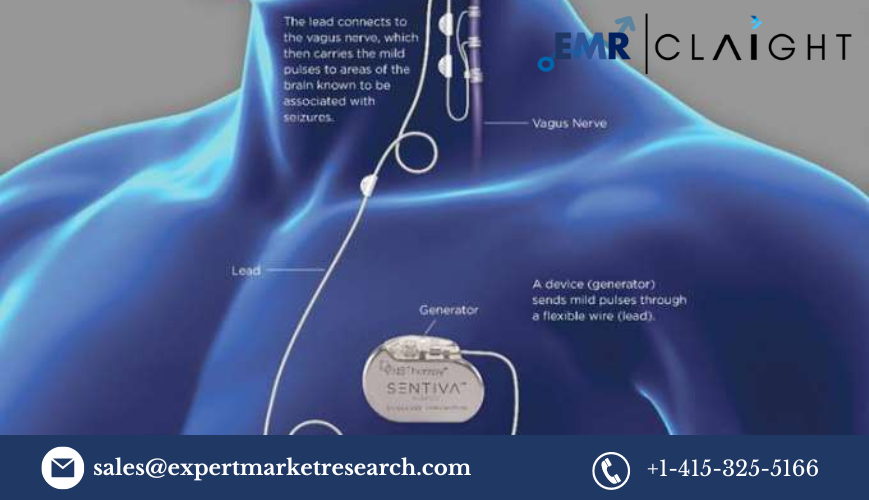The neuromodulation devices market is experiencing remarkable growth, driven by a pressing need for innovative treatments for neurological disorders. With a market valuation of USD 8.65 billion in 2023, projections indicate a substantial expansion at a CAGR of 10.3%, potentially reaching around USD 20.83 billion by 2032. This surge is largely attributed to the rising prevalence of conditions like chronic pain, epilepsy, and depression, all of which significantly impact the quality of life for millions of people worldwide.
What Are Neuromodulation Devices?
Neuromodulation devices are advanced medical technologies designed to modulate nerve activity through various mechanisms, including electrical stimulation, pharmacological agents, or chemical substances. These devices can be classified into two main categories:
- Invasive Devices: These require surgical implantation and include devices like deep brain stimulators (DBS) and spinal cord stimulators (SCS). They are often used for chronic pain management and movement disorders.
- Non-invasive Devices: These are externally applied and include technologies like transcranial magnetic stimulation (TMS) and transcutaneous electrical nerve stimulation (TENS). Non-invasive methods are particularly appealing due to their lower risk profiles and ease of use.
The Growing Need for Neuromodulation Solutions
The demand for neuromodulation devices is on the rise, fueled by several key factors:
Increasing Prevalence of Neurological Disorders
According to the World Health Organization (WHO), neurological disorders affect approximately 1 billion people globally, with conditions like epilepsy, Parkinson’s disease, and migraines becoming more prevalent. The growing aging population, along with lifestyle factors such as poor diet and sedentary behavior, has led to an increase in conditions requiring effective management solutions.
- Statistics:
- Epilepsy affects about 50 million people worldwide.
- Chronic pain conditions, including fibromyalgia and neuropathic pain, impact around 20% of the global population.
Technological Advancements
The neuromodulation field is at the forefront of innovation, with continuous advancements enhancing treatment effectiveness and patient outcomes. Here are a few key trends:
- Closed-loop Systems: These devices can adapt to the patient’s physiological signals in real time, adjusting stimulation accordingly. For example, the RNS® System by NeuroPace monitors brain activity and delivers stimulation to prevent seizures before they occur.
- Miniaturization of Devices: Modern neuromodulation devices are becoming smaller and more efficient, allowing for less invasive procedures and improved patient comfort.
- Artificial Intelligence: AI technologies are being integrated into neuromodulation systems, enabling personalized treatment plans and more precise targeting of therapies.
Greater Acceptance of Non-invasive Therapies
The shift towards non-invasive treatment options is gaining momentum as both patients and healthcare providers seek safer alternatives to traditional surgeries and medications. Neuromodulation offers several benefits:
- Reduced Side Effects: Many neuromodulation therapies have fewer side effects compared to pharmaceutical options, leading to better patient compliance.
- Quick Recovery Times: Non-invasive devices generally allow for quicker recovery and return to normal activities compared to invasive surgical options.
Market Segmentation: Understanding the Landscape
Understanding the various segments within the neuromodulation devices market is crucial for stakeholders. Here’s a deeper dive into the market segmentation:
By Device Type
- Implantable Devices: These include deep brain stimulators (DBS) for conditions like Parkinson’s disease and spinal cord stimulators (SCS) for chronic pain. The implantable segment is expected to dominate the market due to its long-term efficacy.
- External Devices: This category encompasses transcranial magnetic stimulation (TMS) devices used for depression and other psychiatric disorders, as well as transcutaneous electrical nerve stimulation (TENS) devices for pain management. The non-invasive segment is gaining traction due to increasing patient preference.
By Application
- Pain Management: Neuromodulation devices play a significant role in treating chronic pain conditions, with spinal cord stimulators being widely used.
- Movement Disorders: Devices like DBS are crucial in managing movement disorders, improving patient mobility and quality of life.
- Neuropsychiatric Disorders: The application of neuromodulation in treating depression and anxiety is on the rise, with TMS emerging as a leading treatment option.
- Other Applications: Other conditions like migraines and epilepsy are also being addressed through neuromodulation, broadening the market’s scope.
By Region
- North America: Dominates the market, driven by advanced healthcare infrastructure, high adoption of neuromodulation technologies, and significant investments in R&D.
- Europe: Exhibits substantial growth due to increasing awareness of neuromodulation therapies and supportive regulatory frameworks.
- Asia-Pacific: The region is witnessing rapid growth, fueled by rising healthcare expenditure, a growing aging population, and increasing prevalence of neurological disorders.
Competitive Landscape: Key Players to Watch
The neuromodulation devices market is vibrant and competitive, featuring several prominent companies that are pivotal in shaping the industry. Here’s a closer look at some key players:
- NeuroPace, Inc.: Known for its innovative RNS® System designed to treat epilepsy by delivering responsive stimulation to the brain.
- Medtronic plc: A leader in various neuromodulation solutions, including spinal cord stimulators and DBS, continuously investing in research and innovation.
- Boston Scientific Corporation: Recognized for its wide range of devices in pain management, Boston Scientific is at the forefront of technological advancements.
- electroCore, Inc.: Focused on non-invasive neuromodulation therapies, especially for migraine and cluster headaches, with a growing presence in the market.
- LivaNova PLC: Known for its Vagus Nerve Stimulation (VNS) Therapy for epilepsy and depression, LivaNova continues to expand its product offerings.
These companies are actively involved in research and clinical trials, seeking FDA approvals for innovative products while also exploring global market opportunities.
Challenges on the Horizon
Despite the promising growth trajectory, the neuromodulation devices market faces several challenges:
Cost Barriers
The high cost of neuromodulation devices and the accompanying surgical procedures can limit access, especially in developing regions. Efforts to make these technologies more affordable and accessible are crucial.
Regulatory Hurdles
Obtaining FDA approval can be a lengthy and complex process, causing delays in bringing new devices to market. Manufacturers must navigate rigorous testing and regulatory requirements, which can slow innovation.
Insurance Coverage Issues
Many patients face challenges in securing insurance reimbursement for neuromodulation therapies, impacting adoption rates. Advocacy for broader insurance coverage is essential to enhance patient access.
The Future of Neuromodulation Devices
As we look to the future, several trends and developments are expected to shape the neuromodulation devices market:
Personalized Treatment Approaches
Innovations in artificial intelligence and machine learning may allow for more personalized therapies, adapting treatments based on individual patient responses and needs.
Expanding Applications
Ongoing research is exploring the use of neuromodulation for various conditions beyond pain and movement disorders, including treatment for substance use disorders and post-traumatic stress disorder (PTSD).
Integration with Digital Health Solutions
The rise of telehealth and digital health solutions may further enhance the delivery of neuromodulation therapies, allowing for remote monitoring and adjustments to treatment plans.
FAQ Section
- What are neuromodulation devices? Neuromodulation devices are medical instruments designed to alter nerve activity to treat various neurological conditions through targeted stimulation.
- How do neuromodulation devices work? These devices deliver electrical stimulation, medications, or other energy forms to specific areas of the nervous system, modulating nerve function.
- What conditions can be treated with neuromodulation? Common conditions treated include chronic pain, epilepsy, depression, and movement disorders such as Parkinson’s disease.
- What are the recent trends in the neuromodulation devices market? Recent trends include technological advancements, increasing acceptance of non-invasive therapies, and ongoing research into new applications for neuromodulation.



